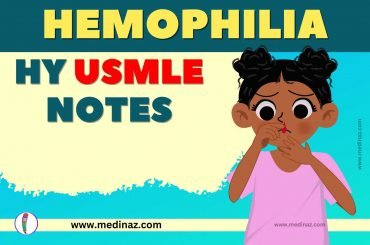Horner Syndrome USMLE Notes & Mnemonics contains all the high-yield points you need to know.
Definition:
- Horner Syndrome: A neurological disorder characterized by a classic triad of ptosis (drooping eyelid), miosis (constricted pupil), and anhidrosis (lack of sweating) on the affected side of the face.
Pathophysiology:
- Result of disruption to the sympathetic nerve pathway supplying the eye and face.
- Can be caused by a variety of lesions affecting the sympathetic chain at different levels.
Etiology:
- Central Causes: Stroke, demyelinating diseases (e.g., multiple sclerosis), brainstem tumors.
- Preganglionic Causes: Pancoast tumor, trauma to the neck or chest, thoracic aortic aneurysm.
- Postganglionic Causes: Carotid artery dissection, neck trauma, neck or skull base tumors.
Clinical Features:
- Ptosis: Mild drooping of the upper eyelid. (Ref)
- Miosis: Pupil constriction on the affected side.
- Anhidrosis: Decreased sweating on the affected side of the face.
- Enophthalmos: Inward sinking of the eyeball (less common).
Diagnosis:
- Clinical Assessment: Based on history and physical examination.
- Pharmacologic Testing: Cocaine and apraclonidine eye drop tests to confirm sympathetic denervation.
- Imaging: MRI or CT to identify the underlying cause (e.g., tumor, stroke).
Management:
- Treat Underlying Cause: Management depends on the etiology.
- Symptomatic Treatment: For ptosis and dry eye.
Mnemonic: “HORNER“
- Hypothalamus (central causes)
- One-sided ptosis
- Reduced sweating (anhidrosis)
- Narrowed pupil (miosis)
- Enophthalmos (possible)
- Remediate the cause
Chart: Horner Syndrome Diagnosis and Management
| Feature | Diagnostic Method | Management Strategy |
|---|---|---|
| Ptosis & Miosis | Clinical assessment | Symptomatic treatment |
| Anhidrosis | Clinical assessment | |
| Pharmacologic Test | Cocaine and apraclonidine test | Confirm sympathetic denervation |
| Underlying Cause | MRI or CT | Treat the identified cause |
Note: On the USMLE, it’s important to recognize the clinical presentation of Horner syndrome and to consider its broad differential diagnosis. Understanding the pathway of sympathetic innervation to the eye is key, as well as knowing the pharmacologic tests used for confirmation. Identifying the underlying cause is essential for management.
Check other important USMLE Notes
A Visual Learning Platform





